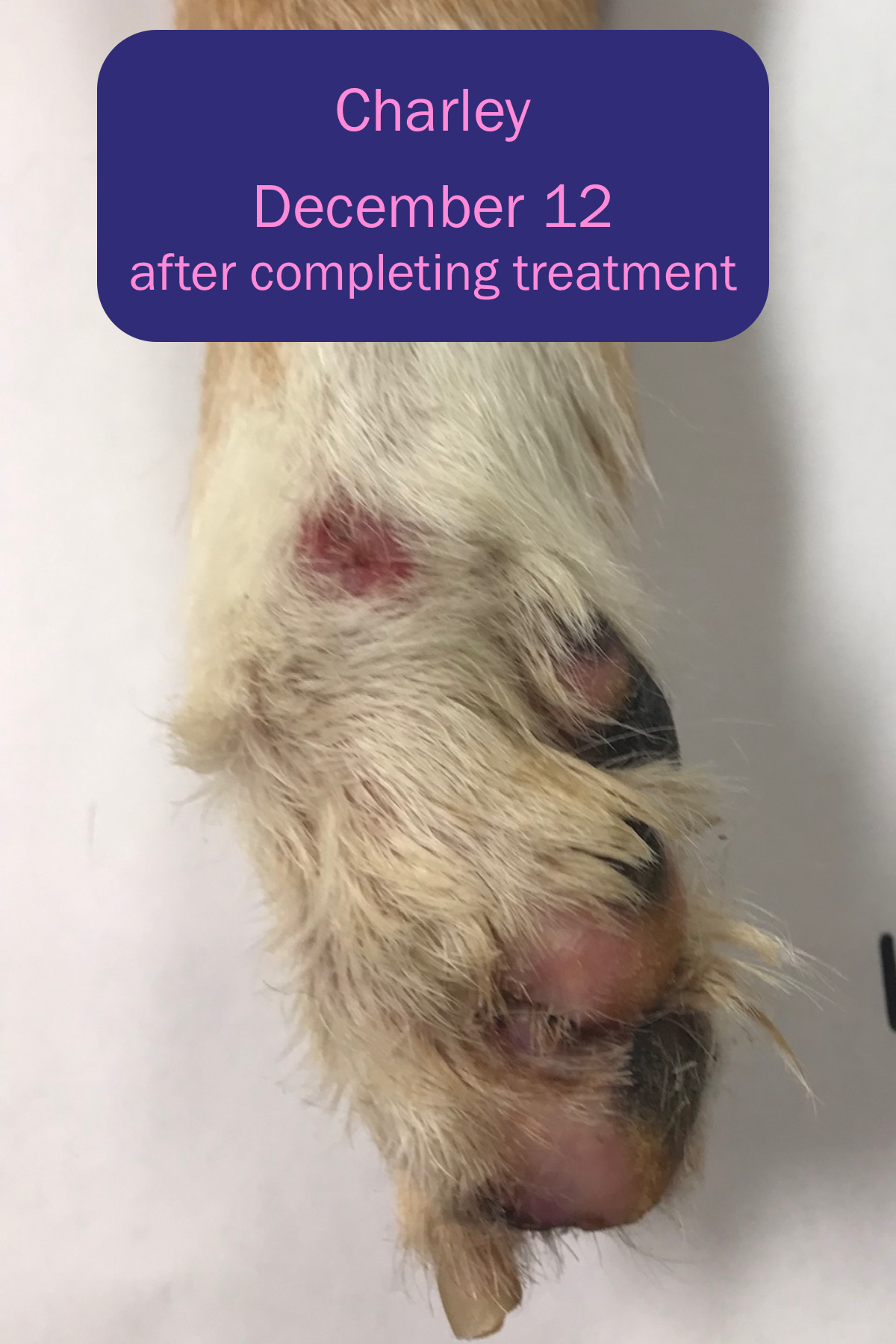Confirmed Degenerative Myelopathy, Self Mutilation
ABSTRACT
Transdermal carbon dioxide was used as primary therapy for wound healing and treatment. After one week of traditional therapy, that included Class 4 Laser Therapy, lavage, bandage changes, antibiotics and pain medications, quicker healing of wounds occurred.
Clinician: Christopher G Hussion, DVM
Client Information: Charley – 14 Year Old MN Pembroke Welsh Corgi
CASE HISTORY AND CLINICAL SIGNS
Charley is an elderly patient with Degenerative Myelopathy diagnosed several years ago and is completely non-ambulatory with the hind end. He enjoys his cart. Patient presented on October 29, after owner found that patient had chewed off his nails and possibly P3s of the 4th and 5th right hind digits.
TREATMENT
We initiated hydrotherapy and bandaging of foot with E-Collar. Clindamycin 150mg BID, Gabapentin 100mg TID, Cytopoint Injection 30mg (previously done for allergies). Also the patient continued Methocarbamol and UltraCell (CBD) as previously prescribed. Radiographs were taken on October 30 to demonstrate that only the nails were chewed off and no bony damage noted on either P3, however the nail was missing on digit 5 and a piece was remaining on digit 4. Lavage and Laser were done daily through November 3rd. Transdermal carbon dioxide therapy was initiated on November 4th and performed for 6 consecutive days for 20 minutes, then moved to treatment every 2 to 3 days through December 5th.
SUMMARY
Summary: In my experience, wounds that occur due to self-mutilation or degloving take quite a bit longer to heal. Using bandage changes, lavage, and Class 4 Laser have been the best solution over the last several years. Transdermal carbon dioxide therapy sped up the healing process. Additionally, the owner found that Charley tried using his right leg some whereas he had made no such efforts previously. I would consider transdermal carbon dioxide therapy the primary option for healing in any similar situations.
Dr. Hussion is the owner/medical director of Old Mill Veterinary Hospital in Leesburg, Virginia. He is a graduate of the University of Missouri College of Veterinary Medicine and is a current member of the AVMA, VVMA (where he serves as a board member), and LCVMA.


